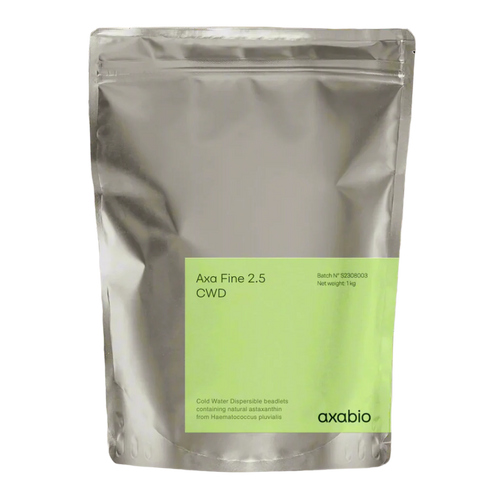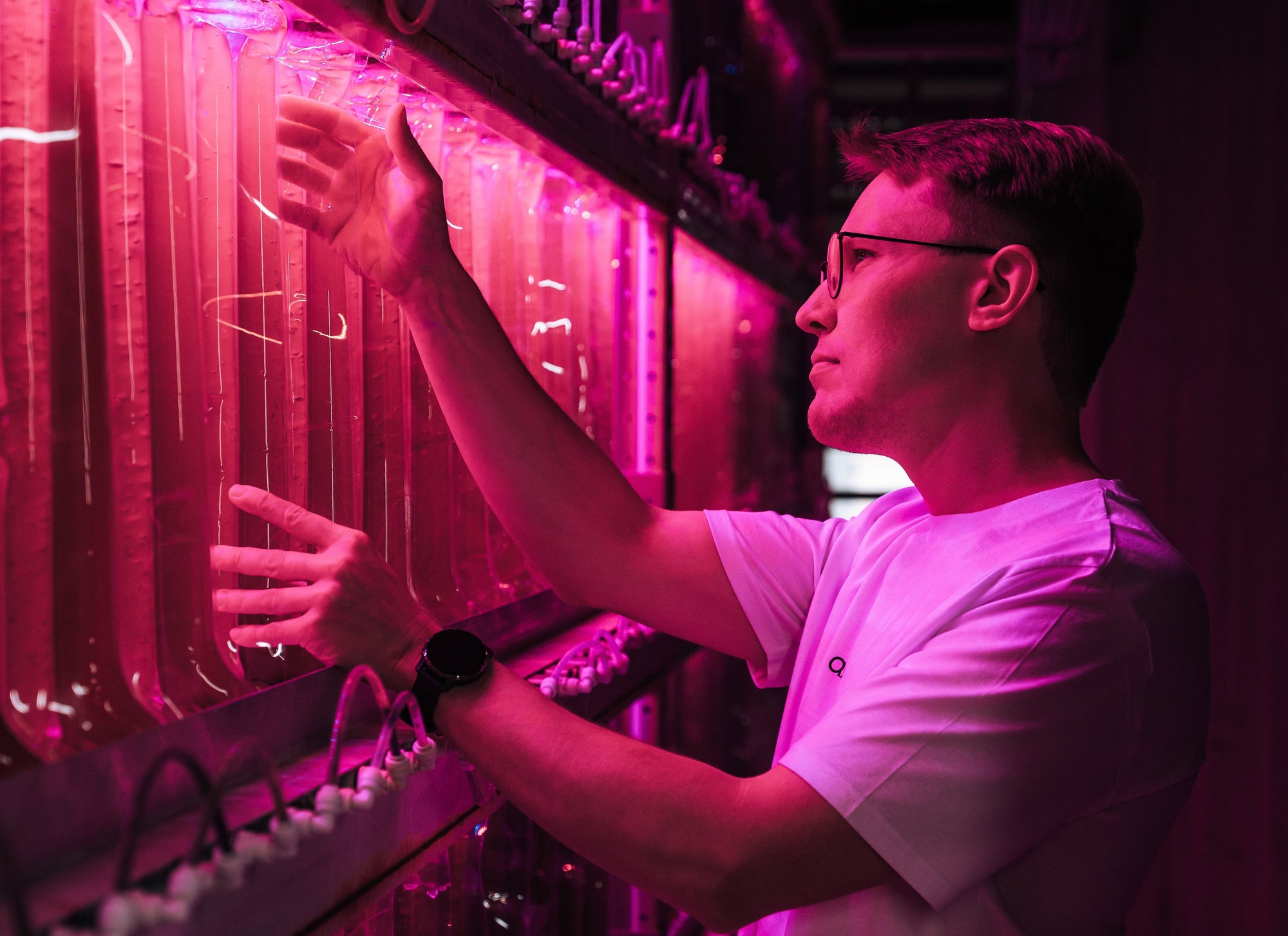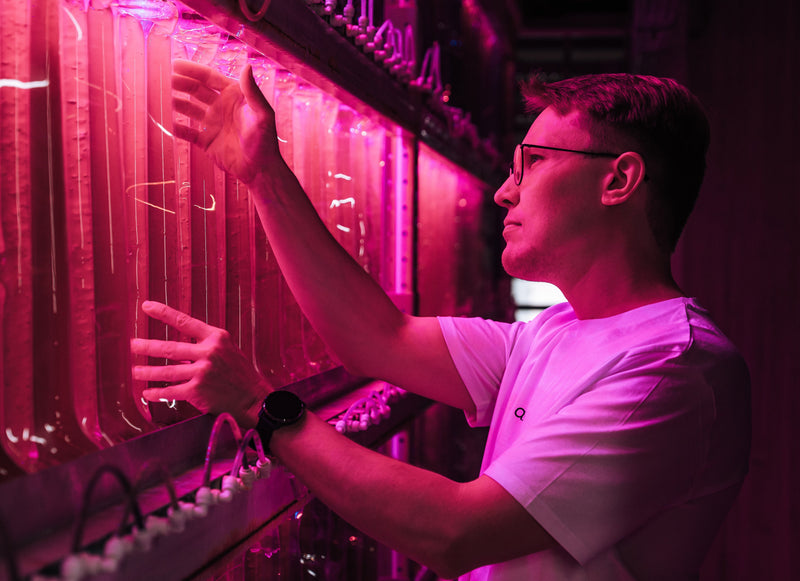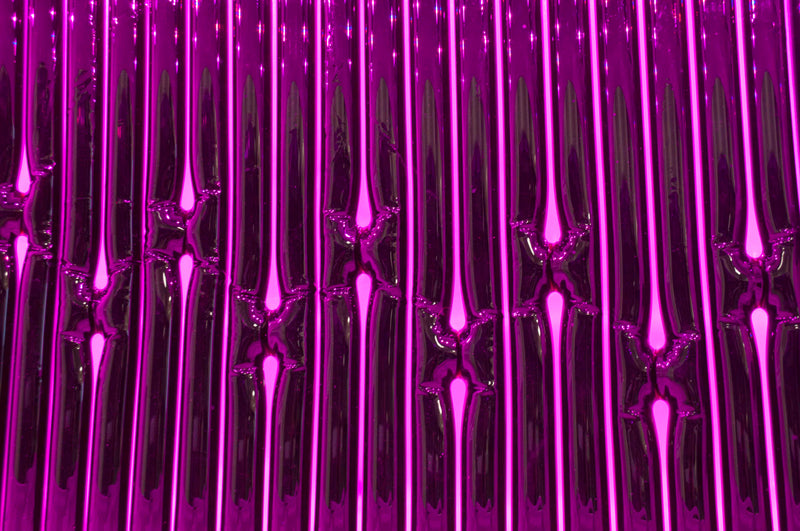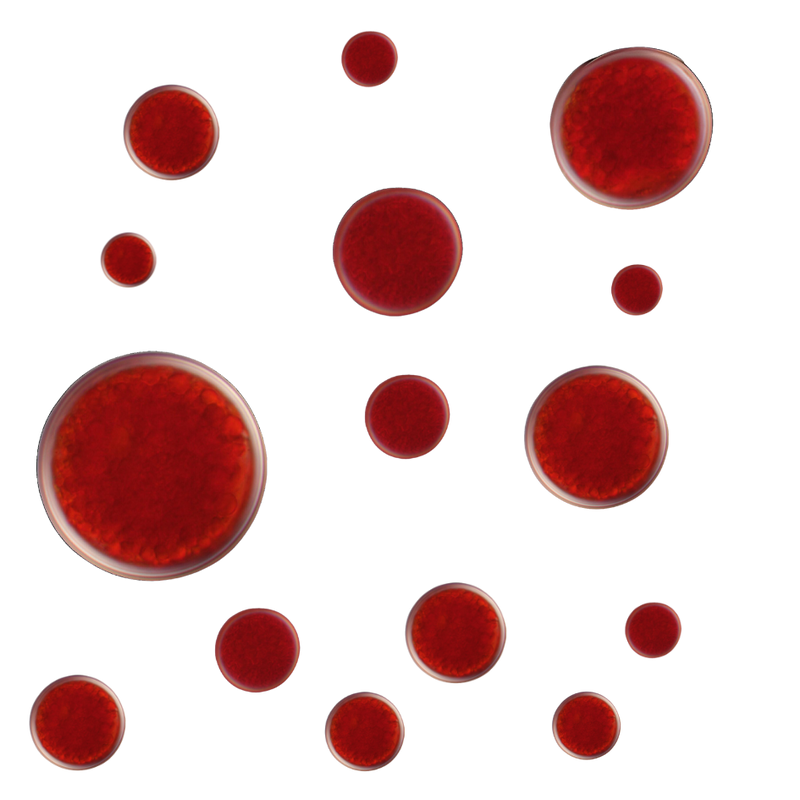In the quest for optimal health and longevity, a microscopic marvel has emerged as a game-changer in the world of antioxidants. This powerhouse molecule, known as astaxanthin, is revolutionizing the health and beauty industries with its potent protective properties. However, not all astaxanthin is created equal. A critical distinction exists between the naturally occurring form and its synthetic counterpart – a difference that has profound implications for efficacy, safety, and sustainability.
At axabio, a pioneering Belgian biotech startup, we're passionate about harnessing the power of microalgae to produce the world's finest natural astaxanthin. Our mission is to make the world a healthier place by unlocking the full potential of these remarkable organisms. Through innovative biology and state-of-the-art technology, we're reinventing natural astaxanthin production to deliver superior antioxidant solutions for our partners in the nutraceutical and cosmetic industries.
In this comprehensive guide, we'll dive deep into the world of astaxanthin, comparing the natural and synthetic forms to reveal why nature's version reigns supreme. Whether you're a brand looking to elevate your products or simply curious about the latest developments in antioxidant science, this article will provide valuable insights into the power of natural astaxanthin.
Astaxanthin: The superhero of the antioxidant world
Astaxanthin belongs to a family of compounds called carotenoids, which include familiar nutrients like beta-carotene and lycopene. However, astaxanthin stands out as the overachiever of the family, boasting antioxidant powers that leave its relatives in the dust.
What sets astaxanthin apart?
Imagine a vibrant red pigment, hidden away in certain seafoods and responsible for the rosy hue of flamingos and the pink flesh of salmon. But astaxanthin isn't content with just being a pretty face. This molecule is a bona fide cellular bodyguard, providing unparalleled protection against oxidative stress.
Origin and production
In nature, astaxanthin is primarily produced by a microalga called Haematococcus pluvialis. This tiny organism is a marvel of survival, producing astaxanthin as a protective shield when faced with environmental stressors. It's nature's way of creating a powerful antioxidant, fine-tuned over millions of years of evolution.
At axabio, we've harnessed this natural process, using cutting-edge technology to cultivate H. pluvialis and extract high-quality natural astaxanthin. Our approach embodies our tagline: "Natural Astaxanthin, Reinvented," as we combine nature's wisdom with innovative biotechnology.

Picture of axabio's patented bioreactor
The synthetic alternative
In contrast to the natural process, humans have developed methods to create astaxanthin in laboratories. This synthetic version, while structurally similar, falls short in many crucial aspects. As Shah et al. (2016) point out:
"Currently, over 95% of the astaxanthin available in the market is produced synthetically; while H. pluvialis derived natural astaxanthin corresponds to <1% of the commercialized quantity."
This statistic is startling, especially considering the significant differences between natural and synthetic astaxanthin.
It's akin to flooding the market with imitation crab meat when the real thing is not only available but superior in every way. Not to mention, synthetic isn't really safe for consumption until human clinical trials showing benefits have been conducted, which isn't the case as we speak.
Natural astaxanthin: Nature's marvel
Natural astaxanthin, like the kind we produce at axabio, is a testament to the perfection of nature's design. Let's break down what makes it so special.
A perfect fit: The magic of stereochemistry
The molecule of astaxanthin comes in three stereoisomeric forms: [3S,3'S], [3R,3'R], and [3R,3'S]. While both natural and synthetic astaxanthin share the same molecular structure, their molecules are shaped differently in 75% of cases, which results in significant differences in their biological activity.
Natural astaxanthin, as found in axabio, is made up entirely of the [3S,3'S] form, the most potent and bioactive version. In contrast, synthetic astaxanthin is a mix of:
- 25% [3S,3'S],
- 50% [3R,3'S],
- 25% [3R,3'R].

Research indicates that synthetic astaxanthin would need to be consumed at doses 20 to 50 times higher than natural astaxanthin to deliver the same health benefits.
Hence, the molecular structure of natural astaxanthin is like a key that fits perfectly into the lock of our cell membranes. This precise fit is crucial for its function as an antioxidant.
Snell & Carberry (2022) explain it best: "In contrast, synthetically produced ASX is composed of stereoisomers that are angled awkwardly, so they are unable to fit into the cell membranes and consequently float free in cells."

Position of astaxanthin in the cell membrane bilayer. From: Ambati et al. (2014)
This perfect fit allows natural astaxanthin to:
- Integrate seamlessly into cell membranes
- Provide optimal protection against free radicals
- Enhance overall cellular health
Powerhouse antioxidant: punching above its weight
When it comes to antioxidant power, natural astaxanthin is in a league of its own. Studies have shown that it is:
- Up to 550 times stronger than vitamin E
- 800 times stronger than CoQ10
- 6,000 times more potent than vitamin C
These aren't just impressive numbers; they translate to real-world benefits. Natural astaxanthin can neutralize multiple free radicals simultaneously, providing comprehensive protection against oxidative stress. It's like having a personal army of antioxidants working 24/7 to keep your cells healthy.
Natural packaging: Esterified for your convenience
In nature, astaxanthin often comes bundled with fatty acids in an "esterified" form. This natural packaging isn't just for show – it enhances the stability and bioavailability of the molecule.
Think of it as nature's way of gift-wrapping the astaxanthin for easy delivery to our cells. This esterification may help our bodies absorb and use astaxanthin more effectively, maximizing its potential benefits.
Comes with friends: The entourage effect
Natural astaxanthin doesn't travel alone. It often brings along other beneficial compounds like omega-3 and omega-6 fatty acids and other carotenoids. This is what scientists call the "entourage effect."
These companion compounds can work synergistically with astaxanthin, potentially enhancing its effects and providing additional health benefits. It's like getting a bonus with your purchase.
Synthetic astaxanthin: The lab-made lookalike
Now that we've sung the praises of natural astaxanthin, let's turn our attention to its synthetic counterpart. While it may look similar on paper, synthetic astaxanthin falls short in several crucial areas:
Made in a lab: A petrochemical connection
Unlike natural astaxanthin, which is produced by microalgae, synthetic astaxanthin is created in laboratories using petrochemicals. This production method raises several concerns:
- Environmental impact: The petrochemical-based production is less sustainable than the algal production of natural astaxanthin.
- Purity concerns: The synthesis process may result in residual impurities or byproducts not present in the natural form.
- Consumer perception: As awareness grows, consumers are increasingly wary of synthetic ingredients derived from petrochemicals.
Shape shifter: The stereochemistry conundrum
Remember how we talked about the perfect fit of natural astaxanthin? Synthetic astaxanthin is more like a shape-shifter. Its molecules can take on different forms, some of which don't exist in nature.
This difference in stereochemistry is crucial. It means that synthetic astaxanthin doesn't integrate into our cell membranes as effectively as the natural version. As Snell & Carberry (2022) noted, synthetic astaxanthin molecules "float free in cells," reducing their effectiveness and potentially interfering with cellular processes.
Market dominator: quantity over quality
Despite its shortcomings, synthetic astaxanthin currently dominates the market. Shah et al. (2016) report that over 95% of commercially available astaxanthin is synthetically derived. This dominance is primarily due to lower production costs and price.
However, as the saying goes, you get what you pay for. The lower cost comes at the expense of efficacy and potentially safety. Nevertheless, more recently the market dynamic seemed to rebalance towards natural astaxanthin. Indeed, Grand View Research estimated that in 2023, the market value of synthetic astaxanthin was 46% of the total market value, which can be explained by lower prices but also decreased volume.
At axabio, we are happy to see this shift on the market as we believe that when it comes to health, quality should never be compromised for cost.
Limited use: Coloring, not healing
Synthetic astaxanthin is mainly used to add color to fish feed in aquaculture.
When it comes to human health applications, it falls short. Mota et al. (2022) explain: "Besides not being consistent with the models of bioeconomic and sustainable development, the use of synthetic astaxanthin is not recommended as a nutraceutical supplement for humans, as it may present some health risks."
This limited use speaks volumes about the differences between natural and synthetic astaxanthin. While natural astaxanthin is being studied for its potential health benefits in humans, synthetic astaxanthin is primarily used as a pigment in animal feed.
Natural vs synthetic: The showdown
Now that we've introduced our contenders, let's put natural and synthetic astaxanthin head-to-head.
Antioxidant power: David vs Goliath
When it comes to fighting free radicals, natural astaxanthin is the heavyweight champion. Capelli et al. (2013) put natural and synthetic astaxanthin to the test, and the results were eye-opening. They found that natural astaxanthin was:
- 20 times stronger in eliminating free radicals
- 14 times stronger in preventing lipid peroxidation
- 2.7 times stronger in preventing oxidative stress
These numbers aren't just abstract concepts. They translate into real-world benefits, with natural astaxanthin providing superior protection against oxidative stress, which is implicated in everything from aging to chronic diseases.
Safety first: A question of origin
When it comes to what we put in our bodies, safety is paramount. This is where natural astaxanthin really shines.
Natural astaxanthin has a long track record of safe use. It's been part of the food chain for millions of years, consumed by animals and humans alike. Our bodies recognize it and know how to use it effectively.
Synthetic astaxanthin, on the other hand, comes with some question marks. Shah et al. (2016) note:
"Moreover, there are concerns about the safety of using synthetic astaxanthin for direct human consumption due to both different stereochemistry and potential carryover of synthesis intermediates."
Legal standing: The regulatory landscape
The regulatory landscape clearly favors natural astaxanthin. Stachowiak & Szulc (2021) point out: "The EU Regulation (EC) No. 1925/2006 on the addition of vitamins, minerals and other substances to foods does not permit the use of synthetic astaxanthin in food. Nor does it have GRAS status (Generally Recognized as Safe) in the US."
This regulatory distinction has significant implications for product development and marketing. Natural astaxanthin's broader regulatory acceptance opens up more potential applications and markets, providing a significant advantage for businesses choosing to use the natural form.
Bioavailability: Getting where it needs to go
Bioavailability is crucial when it comes to any nutrient or supplement. It's not just about what you consume, but what your body can actually use.
Natural astaxanthin has a clear advantage in this arena. Its esterified form and accompanying natural compounds may help our bodies absorb and utilize astaxanthin more effectively.
This superior bioavailability means that even if you consume less natural astaxanthin, your body might be getting more usable antioxidant power than from a larger dose of synthetic astaxanthin. It's quality over quantity in action!
Environmental impact: Natural vs. petrochemical
In today's world, the environmental impact of our choices is becoming increasingly important. Once again, natural astaxanthin comes out on top.
At axabio, we produce natural astaxanthin from microalgae, a renewable resource that can be cultivated sustainably. The natural enzymes present in Haematococcus pluvialis algae make it possible to synthesize astaxanthin in a very efficient way. Indeed, these enzymes will speed up very complex chemical reactions at ambient temperature, and this natural process consumes much less energy compared to the synthetic counterparts. Hence, our production process is designed to have a minimal environmental footprint, aligning with our value of being impact-driven.
Synthetic astaxanthin, on the other hand, is derived from petrochemicals. The production process involves multiple chemical reactions and can generate significant waste. It's like comparing a solar panel to a coal power plant – both produce energy, but one is clearly more environmentally friendly.
Why choose natural astaxanthin?
The superiority of natural astaxanthin is clear. Here's why it's the smart choice for brands in the nutraceutical and cosmetic industries:
- Superior efficacy: Natural astaxanthin's perfect molecular fit and potent antioxidant power translate to more effective products. This can lead to improved consumer outcomes and satisfaction, driving brand loyalty and repeat purchases.
- Safety and regulatory compliance: The established safety profile and broader regulatory acceptance of natural astaxanthin minimize potential risks and regulatory hurdles. This can facilitate faster market entry and expansion, particularly in the food and supplement sectors.
- Market differentiation: Using natural astaxanthin allows companies to differentiate their products in a crowded market. With consumers becoming increasingly educated about ingredient quality, natural astaxanthin can be a key selling point.
- Sustainability credentials: The eco-friendly production of natural astaxanthin aligns with growing consumer demand for sustainable products. This can enhance brand reputation and appeal to environmentally conscious consumers.
- Research opportunities: The superior efficacy of natural astaxanthin opens up new avenues for scientific research, potentially leading to novel applications in health, nutrition, and cosmetics.
Conclusion: Embracing nature's technology
As we've explored throughout this deep dive into the world of astaxanthin, the natural version consistently comes out on top. From its superior antioxidant power to its proven safety profile, from its perfect molecular fit in our cells to its environmentally friendly production, natural astaxanthin offers benefits that its synthetic counterpart simply can't match.
Summary comparing natural vs synthetic astaxanthin
|
Natural astaxanthin |
Synthetic astaxanthin |
|
|
Source |
Produced by microalgae (Haematococcus pluvialis) |
Created in laboratories using petrochemicals |
|
Molecular structure |
Perfect fit for cell membranes |
Unfavorable angles, doesn't fit well into cell membranes |
|
Antioxidant power |
Up to 20 times stronger in eliminating free radicals; 550 times stronger than vitamin E, 800 times stronger than CoQ10, 6,000 times more potent than vitamin C |
Significantly less potent |
|
Stereochemistry |
Consistent, naturally occurring form |
Can take on different forms, some not found in nature |
|
Bioavailability |
Higher, due to esterified form and natural compounds |
Lower |
|
Safety profile |
Long track record of safe use, recognized by body |
Concerns about potential carryover of synthesis intermediates |
|
Regulatory status |
Broader acceptance (e.g., allowed in EU foods, GRAS status in US) |
More restricted (e.g., not permitted in EU foods, no GRAS status in US) |
|
Environmental impact |
Sustainable, produced from renewable resources |
Less sustainable, derived from petrochemicals |
|
Primary use |
Nutraceutical and cosmetic applications for human health |
Mainly used as a coloring agent in fish feed |
|
Associated compounds |
"Entourage effect" with beneficial compounds (e.g., omega-3 fatty acids, other carotenoids) |
Isolated compound without additional benefits |
|
Cellular integration |
Seamlessly integrates into cell membranes for optimal protection |
"Floats free" in cells, potentially interfering with cellular processes |
|
Research potential |
Opens new avenues for scientific research in health, nutrition, and cosmetics |
Limited research potential for human health applications |
|
Consumer perception |
Aligns with growing demand for natural, sustainable products |
May be viewed negatively due to synthetic origin |
|
Oxidative stress protection |
Provides comprehensive protection against multiple free radicals simultaneously |
Less effective in neutralizing multiple free radicals |
|
Market differentiation |
Allows brands to differentiate products in a crowded market |
Less potential for product differentiation |
At axabio, we're committed to harnessing "nature's technology" to produce the best antioxidants in the world. Our natural astaxanthin, reinvented through innovative biology and state-of-the-art technology, represents the pinnacle of antioxidant efficacy and sustainability.
For brands in the nutraceutical and cosmetic industries, choosing natural astaxanthin isn't just a smart business decision – it's an investment in superior product quality, consumer health, and environmental sustainability.
As consumer awareness grows and demand for natural, effective ingredients increases, natural astaxanthin is poised to play an increasingly important role in the health and wellness landscape.
The choice between natural and synthetic astaxanthin isn't just about picking an ingredient. It's about choosing a philosophy – one that respects the wisdom of nature, prioritizes human health, and considers the well-being of our planet.
So, the next time you see astaxanthin on a label, remember: not all astaxanthin is created equal.
Choose natural, and let nature's technology work for you and your customers. At axabio, we're here to help you harness the power of natural astaxanthin and take your products to the next level.
